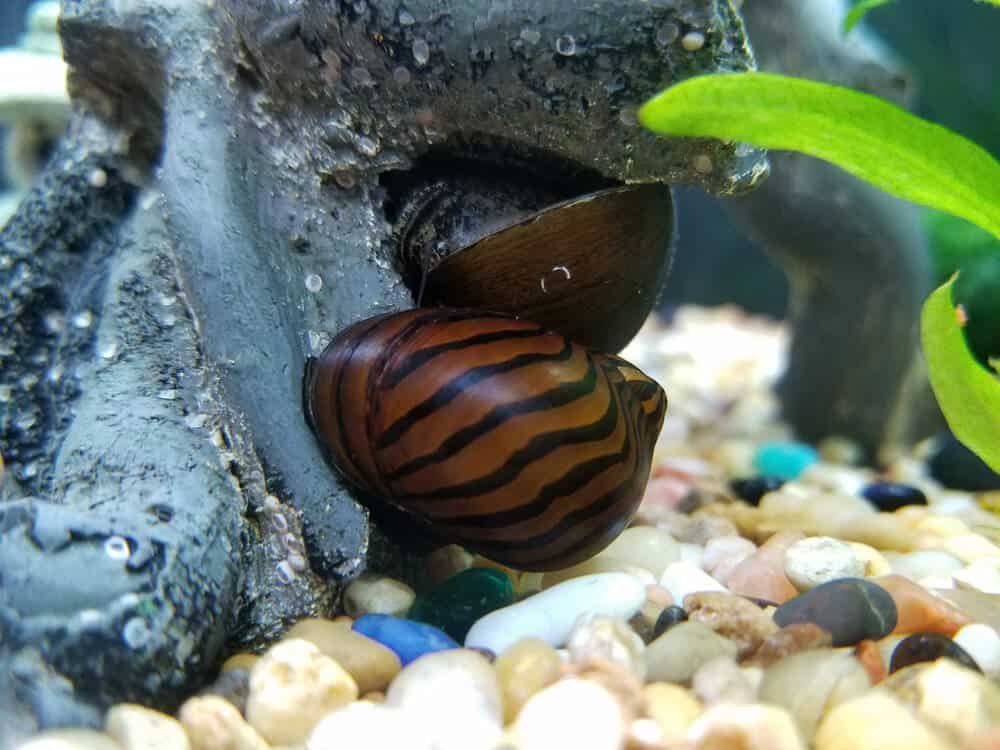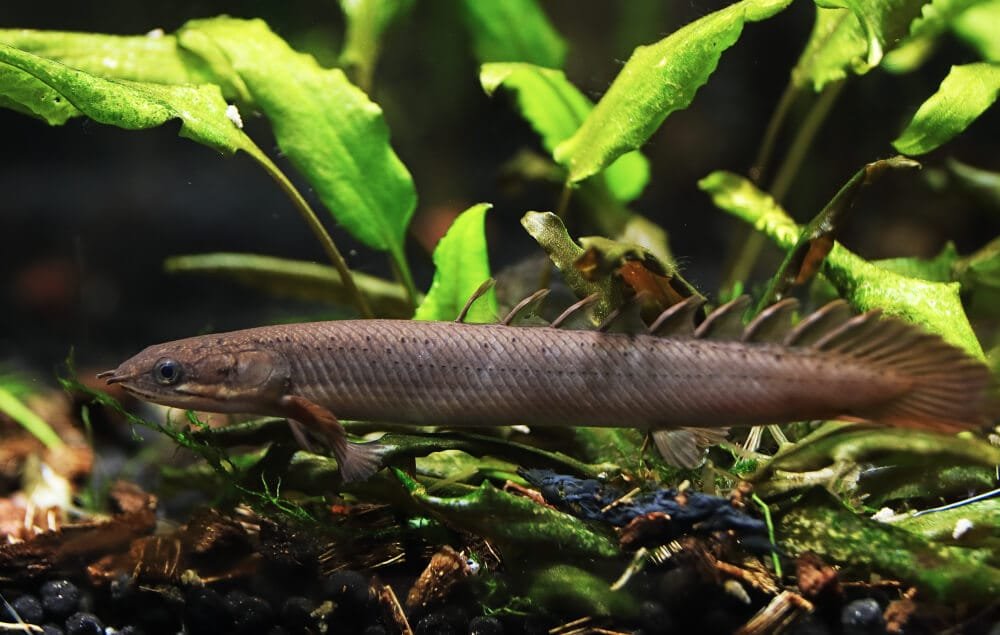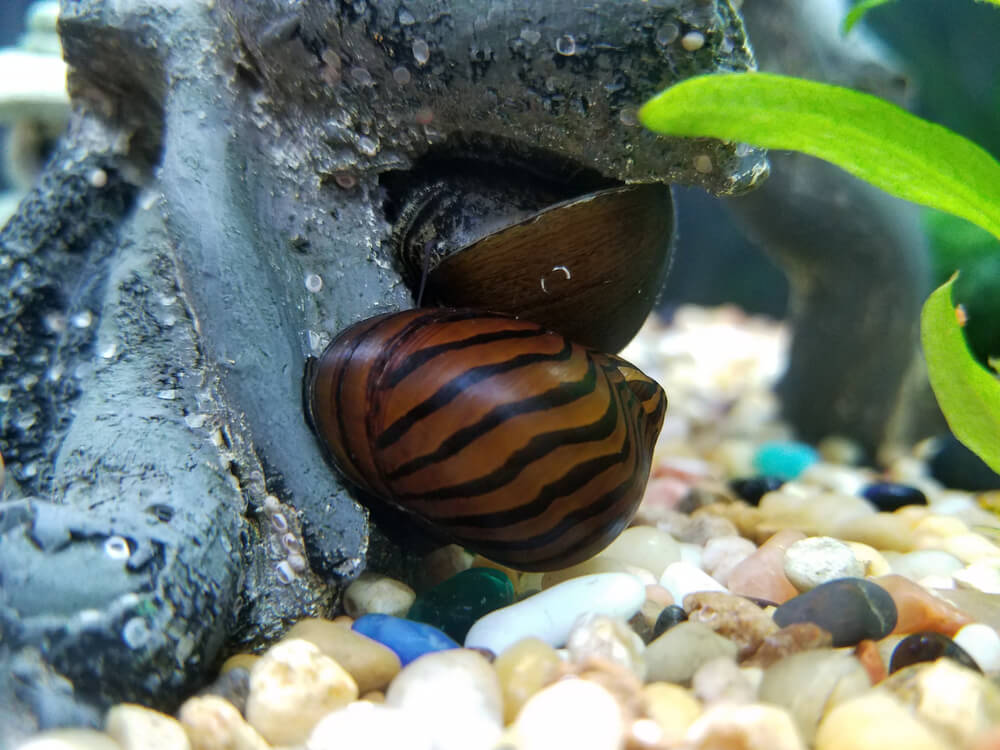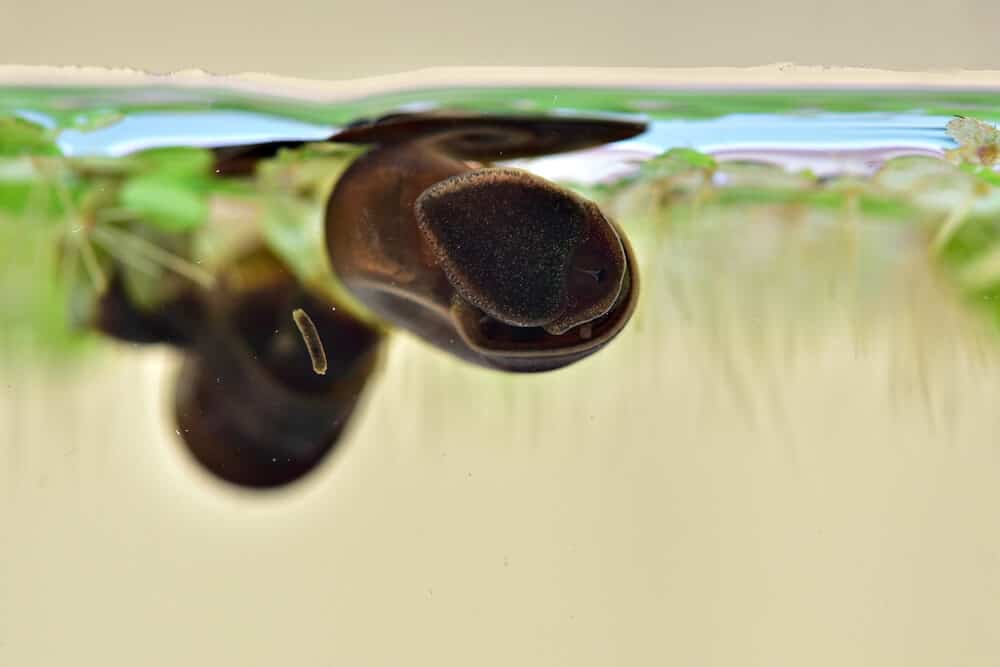Nerite snails are a type of snails that thrive in both freshwater and saltwater environments.
They make good tank mates with dwarf shrimp, so if you have dwarf shrimps in your aquarium, putting in some nerite snails is a good choice.
That said, despite being able to thrive in freshwater, nerite snails don’t actually reproduce in freshwater environments.
Instead, they prefer a saltwater environment in order to start laying eggs. In other words, if you have nerite snails in your aquarium, you won’t have to worry about them overpopulating it.
So now this begs a question, since nerite snails don’t lay eggs in freshwater environments, how often do they do so when placed in saltwater?
Nerite Snails’ Egg-Laying Behavior
Trying to pinpoint the frequency of nerite snails’ egg laying behavior can be quite complicated. After all, the species is so diverse that it’s hard to come up with a reliable conclusion regarding this matter.
But on average, nerite snails lay eggs every few days. But then again, this will vary based on the nerite snail species you have.
As far as we know, there are TONS of nerite snail species that it would take us quite a long time if we are to cover all of them. However, there are six species that are widely known among hobbyists which are as follows:
Black Racer Nerite Snails
Horned Nerite Snails
Olive Nerite Snails
Red Spotted Nerite Snails
Tiger Nerite Snails
Zebra Nerite Snails
According to some studies, it will take around 30 days for juvenile nerite snails to fully mature. However, another study contradicted it, saying that it only takes 14 days if we’re to consider the egg materials being dislodged from the egg capsule.
That said, once eggs are fertilized, it will then take around 10-12 days for the nerite snails’ eggs to hatch. After that, the larva will then thrive in the water for several days, after which it can then start feeding.
How To Determine Fertile Nerite Snail Eggs
There are a few methods you can use to determine if nerite snail eggs are fertile. For one, you can check if the eggs exhibit any form of blemish or cracks on their surface.
If there’s some sort of damage, it can be an indicator that the eggs aren’t fertile.
Another method is to check the eggs’ size. On average, eggs that are somewhat smaller aren’t fertile and won’t be able to hatch. Lastly, you can also check the eggs to see if they have a greenish or yellowish color.
This is an indication that they’re being fertilized and will hatch soon.
Laying Eggs In Freshwater
There’s really no exact answer as to whether nerite snails are able to reproduce in freshwater environments or not.
In fact, the very diverse range of nerite snail species makes it even more baffling to come to a solid conclusion.
There are some nerite snail species that might be capable of reproducing in freshwater environments, and there might also be some that can only reproduce in saltwater.
According to experiments, the eggs of nerite snails won’t be able to hatch unless you manually open their egg capsule.
So basically, if a nerite snail lays clusters of eggs, those eggs won’t be able to hatch unless they’re taken into their natural habitats.
There are several factors that could potentially affect the way nerite snail eggs hatch. They’re as follows:
- Water Salinity – Most experts believe that this is the single most important factor that contributes to the development of nerite snail eggs. After all, nerite snails typically live in saltwater in the wild, which only means that their eggs are accustomed to hatching in saline water.
- Temperature – Nerite snails typically thrive in unforgiving water habitats with temperatures ranging from 68 to 95 degrees Fahrenheit on average.
- Water Turbulence – Another potential factor that explains why nerite snails might not be able to hatch their eggs in a freshwater aquarium is that its calm water doesn’t have the same wave action as that of their natural habitat.
How To Care For Nerite Snail Eggs In Your Aquarium
While nerite snails won’t be able to overpopulate your freshwater aquarium, the problem is that their eggs will. If not cared for properly, these egg capsules can make any given tank crowded.
Besides, since those eggs won’t likely hatch anyway, what’s the point of keeping them around? In that case, you can just perform some removal measures to take care of them.
Here are some methods we recommend:
- Removing the eggs manually – You can use a block of smooth-edged metal or glass to gently scrape off egg capsules from the surface of your aquariums. However, if the egg capsules are sticking to the shell of your nerite snails, don’t attempt to remove them as you’ll end up damaging your snails’ shells instead.
- Give them a surface to lay their eggs on – You can also provide your nerite snails with a surface on which they can lay their eggs on. It could be driftwood or perhaps rocks with crevices.
- Separate male from female nerite snails – Since nerite snails reproduced sexually, one method you can use to prevent them from laying too many eggs is to separate them. This can be a complicated process, but it’s entirely possible to pinpoint which nerite snails are male and which are female.
- Introduce fish that can eat nerite snails – There are various fish and even shrimp species that can prey on nerite snails. Some good examples include lizard catfish, pea puffer, and even crayfish. However, this shouldn’t be your first option as it will be impossible to teach these species to just go for the eggs alone.
Conclusion
To conclude, nerite snails lay eggs pretty regularly. While they might not be able to overpopulate your aquarium since their eggs most likely won’t hatch in freshwater, they might fill it up with eggs instead.
This can be a challenge at times, and it’s one that will require you to do certain measures to make sure your tank won’t be filled with tons of their eggs.







